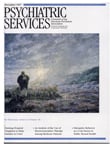Dr. Thomas Grisso is an author who scarcely needs introduction, thanks to the immense contribution his research and writing have made to the fields of forensic psychology and psychiatry. Students and novices in this arena eagerly comb library and bookstore shelves in pursuit of his older publications. Seasoned clinicians savor the challenge to keep improving one's skills that he continues to pose to forensic practitioners. No one looks for Dr. Grisso's insights with greater interest than those of us who struggle to appreciate the vagaries of child and adolescent development and its impact on how youthful defendants maneuver through the juvenile justice system and adult criminal court.
This book is a manual that describes four instruments to help mental health professionals assess the capacity of juvenile and adult defendants to appreciate and understand the significance of their Miranda rights: the right to remain silent and the right to have legal counsel during police questioning.
The four instruments are Comprehension of Miranda Rights, Comprehension of Miranda Rights—Recognition, Comprehension of Miranda Vocabulary, and Function of Rights in Interrogation. The manual includes an overview of the instruments and their purpose and relevance; a description of the instruments' development and information on their reliability, based on research originally described in Grisso's
Juveniles' Waiver of Rights (
1); details on administration and scoring; guidance for interpreting scores; and useful information for clinicians and attorneys on addressing questions of admissibility of the data as evidence in legal proceedings.
Dr. Grisso cautions examiners that the instruments alone do not provide sufficient information for forming expert opinions about an individual's capacity to waive Miranda rights. He refers to his recent book,
Forensic Evaluation of Juveniles (
2), for a fuller discussion of the broader process of evaluation in which the Miranda instruments play an important role.
I found this manual to be tremendously useful. The material is presented in a clear, concise, and easy-to-understand format. The examples of responses an adolescent might give to questions about various aspects of the Miranda warning are plausible, and the scoring guidelines are practical. I was most impressed with the Comprehension of Miranda Rights—Recognition instrument as a tool that can be helpful in assessing a young person who has weak verbal expressive skills, as do many minority and learning-disabled defendants.
In the current legal climate in which younger and younger children find themselves involved in the criminal court system, facing potentially dire consequences, it is imperative that mental health professionals who are called on to evaluate these youths do so in a competent and credible manner. The more objective the data that can be brought to bear, the better. With publication of these instruments for assessing competence to waive Miranda rights, Dr. Grisso has made yet another major contribution to our endeavors.

